Sean Bienvenidos Japonítasarqueológicos A Una Primera Noticia De Geografía Japonesa, Espero Que Os


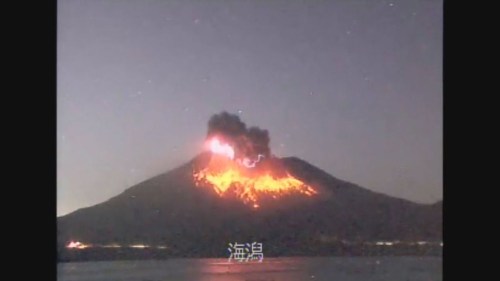

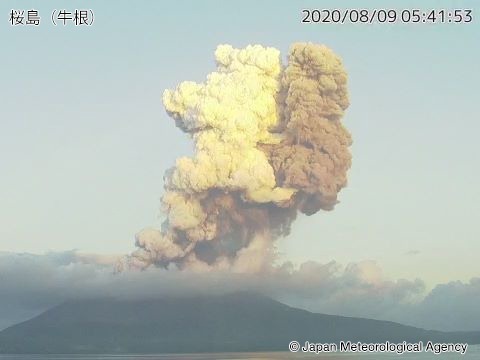
Sean bienvenidos japonítasarqueológicos a una primera noticia de geografía japonesa, espero que os guste dicho esto comenzamos. - En la isla de Kyuchu se localiza el volcán Sakurajima que está en la ciudad de Kagoshima. Entró en erupción el pasado 25 de julio, por suerte se están evacuando a la población de los alrededores. - Japón es un país que está a la orden del día en lo que respecta al tema vulcanológico. Espero que os haya gustado y nos vemos en próximas noticias de arqueología e historia japonesa. - 考古学ジャポナイトは日本の地理の最初のニュースを歓迎します、私はあなたがそれを好きであることを願っています、これを言って、始めましょう。 - 九州の桜島火山は鹿児島市にあります。 7月25日に噴火し、幸い周囲の人々は避難している。 - 日本は火山学に関して議題になっている国です。 あなたがそれを気に入って、将来の考古学と日本の歴史ニュースであなたに会えることを願っています。 - Archaeological Japonites are welcome to a first news of Japanese geography, I hope you like it, having said this, let's start. - On the island of Kyuchu, the Sakurajima volcano is located in the city of Kagoshima. It erupted on July 25, luckily the surrounding population is being evacuated. - Japan is a country that is on the agenda when it comes to volcanology. I hope you liked it and see you in future archeology and Japanese history news.
More Posts from Noticiasarquelogicasjaponesas and Others

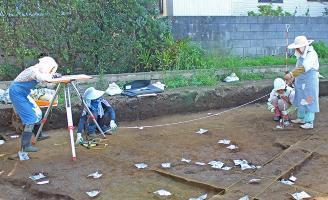
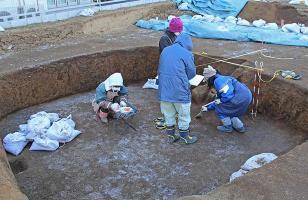

Sean bienvenidos japonistasarqueológicos, a una nueva entrega de arqueología japonesa, una vez dicho esto pónganse cómodos que empezamos. - Antes que nada:¿Qué entendemos por una excavación arqueológica? Consiste en extraer los restos materiales de las culturas del pasado a esto se le llama cultura arqueológica por ejemplo: los restos viviendas de fosa y hoyos. Los restos arqueológicos, se localizan en la Ciudad de Narashino, en la prefectura de Chiba, los restos podrían tratarse del periodo jomon (15.000/16.000 a.c) - Espero que os haya gustado y nos vemos en próximas publicaciones, que pasen una buena semana. - 日本の考古学者たちよ、ようこそ。そう言われたら、くつろいで、さっそく始めましょう。 - まず、考古学的発掘とはどういうことかというと、過去の文化の物質的遺構を取り出すことであり、これを考古学的文化と呼びます。例えば、竪穴住居跡やピット跡などです。千葉県習志野市にあるこの遺跡は、縄文時代(紀元前15,000~16,000年)のものと思われます。 - 気に入っていただけたでしょうか、また今後の記事でお会いしましょう、良い一週間をお過ごしください。 Welcome, Japanese archaeologists, to a new installment of Japanese archaeology, and once that's been said, make yourselves comfortable and let's get started. - First of all: What do we mean by an archaeological excavation? It consists of extracting the material remains of the cultures of the past, this is called archaeological culture, for example: the remains of pit dwellings and pits. The archaeological remains, located in Narashino City, Chiba Prefecture, may date back to the Jomon period (15,000/16,000 BC). - I hope you liked it and see you in future posts, have a nice week.
Sean bienvenidos japonitasarqueologicos, a un nuevo especial ya somos 2400 seguidores mil gracias por el apoyo y para agradeceros os traigo una de las leyendas más icónicas de Japón dicho esto pónganse cómodos que empezamos. - ¿Qué significa Sakura? Significa Cerezo en flor, seguramente os suene el nombre por algún que otro personaje de anime como: Sakura cazadora de cartas o en la película llamada comerme tu páncreas. - ¿Cómo surgió está leyenda? Todo comienza, en un Japón que está desolado por las guerras y horrores de los seres humanos, nuestro personaje se localiza en un bosque donde hay un árbol al cual no le florecían las flores, los animales ni la hierba por el mal que emanaba de él. - Un día un hada se compadeció de él y le concedió el poder de transformarse en hombre durante 20 años para poder encontrar el amor pero no fue así lo único que vio fue horror. Cuando le quedaba poco tiempo seguía sin florecer en lo que respecta como árbol y como humano. Un día en la orilla del río se deslumbró al ver a Sakura y se enamoró de ella. Llegó el día en el que se transformó en árbol y Sakura abrazó el árbol, le confesó su amor el hada tenía dos opciones adherirse al Yohiro o no pero viendo los horrores del mundo decide fusionarse con él. - Esta leyenda está ligada a una de las festividades más importantes de Japón que se llama Hanami durante una semana los japoneses contemplan la flor de Sakura en todo su esplendor. Esto fue un símbolo para los Kamikazes durante la 2ww y para los samuráis que lo consideraban con la sangre. - Espero que os haya gustado el especial y nos vemos en próximas publicaciones de Arqueología japonesa. Un cordial saludo. - 日本考古学へようこそ。フォロワー数が 2,400 人になりました。ご支援いただき、ありがとうございます。そうは言っても、安心して始めましょう。 - さくら とはどういう意味ですか?桜という意味です。カードハンターさくらや映画「君の膵臓をたべます」などのアニメのキャラクターでこの名前をよくご存じでしょう。 - この伝説はどのようにして生まれたのでしょうか?すべては、戦争と人間の恐怖によって荒廃した日本で、私たちのキャラクターは、そこから発せられる悪のために花、動物、草が咲かなかった木がある森にいます。 - ある日、彼を憐れんだ妖精が、愛を見つけるために20年間人間に変身する力を与えてくれましたが、そうではなく、彼が見たのは恐怖だけでした。 彼に残された時間がほとんどないとき、彼はまだ木としても人間としても成長していませんでした。ある日、彼は川岸で桜を見て幻惑し、恋に落ちました。彼が木に変身する日が来て、サクラは木に抱きつき、愛を告白しました。妖精には2つの選択肢がありました。ヨヒロに従うかどうか。しかし、世界の恐ろしさを見て、彼女は彼と融合することを決めました。 - この伝説は、花見と呼ばれる日本で最も重要なお祭りの 1 つと結びついており、日本人は 1 週間にわたってその素晴らしさを満喫する桜の花を鑑賞します。これは、第二次世界大戦中の特攻隊と、それを血をもって考えた武士たちの象徴でした。 - この特集を気に入っていただければ幸いです。今後の日本考古学の出版物でお会いしましょう。心のこもった挨拶。 - Welcome japonitasarqueologicos, to a new special we are already 2400 followers thank you very much for the support and to thank you I bring you one of the most iconic legends of Japan that said make yourselves comfortable we begin. - What does Sakura mean? It means Cherry Blossom, surely you know the name from some other anime character like: Sakura card hunter or in the movie called eat your pancreas. - How did this legend come about? It all begins, in a Japan that is devastated by wars and horrors of human beings, our character is located in a forest where there is a tree that did not bloom flowers, animals or grass because of the evil that emanated from it. - One day a fairy took pity on him and granted him the power to transform into a man for 20 years to be able to find love but it was not like that the only thing he saw was horror. When he had little time left, he still did not blossom as a tree or as a human. One day on the river bank he was dazzled by the sight of Sakura and fell in love with her. The day came when he transformed into a tree and Sakura hugged the tree, confessed her love to him, the fairy had two options to join Yohiro or not, but seeing the horrors of the world she decided to merge with him. - This legend is linked to one of the most important festivals in Japan called Hanami, during which the Japanese contemplate the Sakura flower in all its splendor for a week. This was a symbol for the Kamikazes during WWII and for the samurai who considered it to be blood. - I hope you liked the special and see you in future publications of Japanese Archaeology. Best regards.


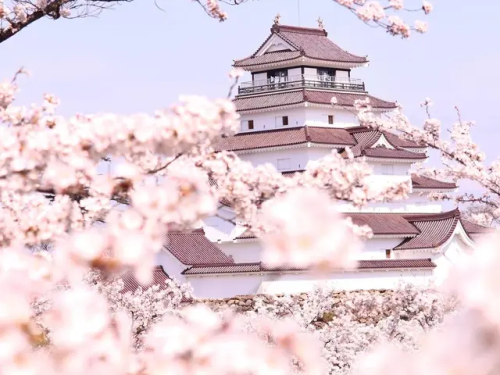




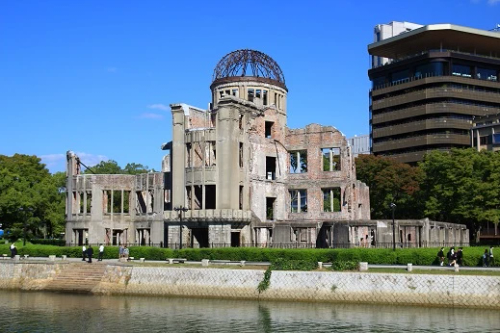
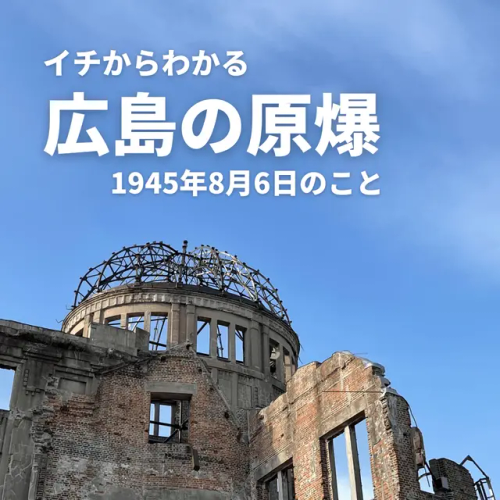

Sean bienvenidos, japonistasarqueologicos a una nueva entrega de historia nipona en la que os pongo imágenes de los epicentros tras los bombardeos del 6 y 9 de agosto, una vez dicho esto pónganse cómodos que empezamos. - Antes que nada me gustaría poner un poco de contexto histórico para poder entender la situación, Japón estaba perdiendo la guerra y estaban buscando formas desesperadas para frenar el avance norteamericano que se cernía sobre el país del sol naciente. Recurrirán a los kamikazes vía aérea y terrestre de hecho se estaba preparando en Japón unas fuerzas de defensa con mujeres, tras la batalla de Okinawa en los 82 días de combate murieron cerca de 100.000 soldados japoneses, más de 12.000 estadounidenses y al menos 100.000 civiles locales, incluidos cientos que fueron obligados a matarse a sí mismo, también se perdería el Yamato en el último kamikaze. - Ciudad de Hiroshima:6 de agosto 1945, Little Boy fue arrojado desde el Enola Gay, matando a más de 70.000 personas al instante y muchas más morirían consecuencia de la radiación. Ciudad de Nagasaki: 9 de agosto 1945, Fat Man, fue la otra bomba atómica lanzada por el mismo avión, causando la muerte de 49.000 personas el día de la explosión. - Conclusión: Los costos fueron terribles, ya que las propias consecuencias lo fueron aún más, espero que no se tengan más bombas atómicas, ni de cualquier otro tipo, el ser humano debería aprender de los errores de la historia para que se acabaran las guerras. Publicación en memoria de todos los que murieron por las bombas atómicas. - Esperó que os haya gustado y nos vemos en próximas publicaciones que pasen una buena semana. - 日本の考古学者の皆さん、ようこそ日本史の新連載へ。8月6日と9日の原爆投下後の爆心地の画像をお届けします。 - まず最初に、この状況を理解するために歴史的背景を説明したいと思う。日本は戦争に負け、日出ずる国に迫りつつあったアメリカの進撃を食い止めるための絶望的な方法を模索していた。沖縄戦の後、82日間の戦闘で10万人近くの日本兵が死に、1万2000人以上のアメリカ兵と、自殺を余儀なくされた数百人を含む少なくとも10万人の民間人が亡くなった。 - 広島市:1945年8月6日、エノラ・ゲイからリトルボーイが投下され、7万人以上が即死。長崎市:1945年8月9日、ファットマンが同じ飛行機から投下され、爆発当日に49,000人が死亡した。 - 結論:原爆投下は、その結果そのものもさることながら、その代償もまた恐ろしいものであった。 私は、原爆や他のいかなる種類の爆弾もこれ以上投下されないことを願うとともに、人類が歴史の過ちから学び、戦争がなくなることを願っている。原爆で亡くなられたすべての方々を悼んで。 - お気に召していただけたなら幸いである。 良い一週間を. - Welcome, Japanese archaeologists, to a new instalment of Japanese history in which I bring you images of the epicentres after the bombings of 6 and 9 August, so make yourselves comfortable and let's get started. - First of all I would like to give some historical context to understand the situation, Japan was losing the war and they were looking for desperate ways to stop the American advance that was looming over the land of the rising sun. They resorted to kamikazes by air and land in fact they were preparing in Japan a defence force with women, after the battle of Okinawa in the 82 days of combat nearly 100,000 Japanese soldiers died, more than 12,000 Americans and at least 100,000 local civilians, including hundreds who were forced to kill themselves, they would also lose the Yamato in the last kamikaze. - Hiroshima City: 6 August 1945, Little Boy was dropped from the Enola Gay, killing over 70,000 people instantly and many more would die from radiation. Nagasaki City: 9 August 1945, Fat Man, was the other atomic bomb dropped from the same plane, killing 49,000 people on the day of the explosion. - Conclusion: The costs were terrible, as the consequences themselves were even more so. I hope that there will be no more atomic bombs, or any other type of bomb, and that mankind should learn from the mistakes of history so that wars will end. Publication in memory of all those who were killed by atomic bombs. - I hope you liked it and see you in future publications. Have a good week.



Sean bienvenidos a un nueva entrega un tanto especial, ya que tengo el gusto de presentaros Ishibutai, localizado en la prefectura de Nara data del periodo Asuka(592-710). - En un principio se barajaron hipótesis de que podría haber sido utilizado para espectáculos, en la década de los 30, Ishibutai es un kofun y os estaréis preguntando ¿no se supone que tenían ojo de cerradura? - Los podian a ver de muchos tipos se empiezan a construir en el año 300 al 592 d.c pero eso será otro capítulo de la arqueología y prehistoria japonesa. La tumba pudo pertenecer a Soga no Umako un político y ocupa una extensión de 54 m es la mayor estructura megalítica conocida en Japón. - ¿Hasta cuando estuvo utilizada? la edad de uso os dejará helados se construyó en el siglo VI y estuvo hasta el siglo VII para ser más exactos en este segundo dato en el 626 d.c. - En 1957 fue nombrado patrimonio nacional por la Unesco, ¿Cuánto pesa esta mole? un total de 30 rocas que le suman un peso aproximadamente de 2300 toneladas y las piedras del techo suman una friolera de 77 toneladas aproximadamente. - Espero que os haya gustado y nos vemos en una nueva publicación de arqueología y prehistoria arqueología japonesa. - Welcome to a new, somewhat special installment, as I have the pleasure of introducing you to Ishibutai, located in the Nara prefecture, dating from the Asuka period (592-710). - At first, hypotheses were considered that it could have been used for shows, in the 1930s, Ishibutai is a kofun and you may be wondering, aren't they supposed to have a keyhole? - You could see them of many types, they began to be built in the year 300 to 592 AD but that will be another chapter of Japanese archeology and prehistory. The tomb could have belonged to Soga no Umako, a politician, and occupies an area of 54 m, it is the largest megalithic structure known in Japan. - Until when was it used? The age of use will leave you frozen. It was built in the 6th century and was there until the 7th century to be more exact in this second data in 626 AD. - In 1957 it was named a national heritage site by UNESCO. How much does this mass weigh? a total of 30 rocks that add up to a weight of approximately 2,300 tons and the stones of the roof add up to a whopping 77 tons approximately. - I hope you liked it and see you in a new publication of archeology and prehistory Japanese archaeology. - 新しい、ちょっと特別な回へようこそ。今回は、飛鳥時代 (592 ~ 710 年) に遡る、奈良県にある石舞台についてご紹介したいと思います。 - 当初は、1930 年代にショーに使用されたのではないかという仮説が考えられていました。 石舞台は古墳ですが、鍵穴があるはずではないかと疑問に思うかもしれません。 - さまざまなタイプのそれらを見ることができ、それらは西暦 300 年から 592 年に建てられ始めましたが、それは日本の考古学と先史学の別の章となるでしょう。 この墓は政治家蘇我馬子の墓と考えられ、面積は54メートルあり、知られている巨石建造物としては日本最大である。 - いつ頃まで使われていましたか? この 2 番目のデータは西暦 626 年で、6 世紀に建てられ、より正確には 7 世紀まで存在していました。 - 1957 年にユネスコによって国家遺産に指定されましたが、この塊の重さはどれくらいでしょうか? 30 個の石を合計すると約 2,300 トン、屋根の石を合計すると約 77 トンにもなります。 - 気に入っていただければ幸いです。考古学と先史時代の日本の考古学の新しい出版物でお会いしましょう。




Sean bienvenidos japonistasarqueológicos a una nueva entrega de arqueología japonesa, en la cual hablaremos de Ruinas de Toro, una vez dicho esto pónganse cómodos que empezamos. - Ruinas de Toro, se localizan en la ciudad de Shizuoka, en la región de Chūbu, se construyeron en el periodo Yayoi y continuaron desde finales de dicho período e incluso se usaron el período Kofun siglos I al siglo V, a pesar de que fueron dañadas por las inundaciones. - En la publicación anterior hablamos, de que las ruinas fueron descubiertas en plena 2ww en 1943, lo que corresponde a la era showa, ya que se estaba construyendo, una fábrica de municiones para fabricar hélices para aviones de combate y accidentalmente encontramos objetos de barro y madera en el suelo, desde entonces se excavó hasta los años 1999. - Para continuar nuestro viaje por la arqueología de la posguerra, nos vamos a trasladar a la década de 1947, fue cuando se realizaron las excavaciones en masa hasta mitad del siglo pasado, en la que se descubrieron: 12 viviendas, 2 almacenes y 8 hectáreas de arrozales, del periodo Yayoi que datan de hace 2000 años de antigüedad. - También aparecieron: campanas de bronce, el lugar se reconstruyo en 1951. Por el motivo de una autopista en 1965 salieron más restos arqueológicos a lo que se le llama arqueología de salvamento, al final de 1999, se actuaron más excavaciones en otras partes del país en Kyushu, kinki y Tohoku hasta 2003. - Espero que os haya gustado os deseo una buena semana y nos vemos en próximas publicaciones del país del sol naciente.
-
日本の考古学者の皆さん、ようこそ!今回は登呂遺跡についてお話しします。そう言ったら、くつろいでいただき、さっそく始めましょう。-中部地方の静岡市にある登呂遺跡は、弥生時代に築かれ、弥生時代後期から続き、1世紀から5世紀にかけての古墳時代にも、洪水で被害を受けながらも利用されていた。-前号では、昭和に相当する2ww中頃、戦闘機のプロペラを製造する軍需工場が建設されている最中に発見され、偶然、土や木のオブジェが地面に落ちていたことを紹介したが、その後、平成11年代まで発掘調査が行われた。-戦後考古学の旅を続けるために、1947年の10年間に移り、前世紀半ばまで大規模な発掘調査が行われ、2000年前の弥生時代の住居12棟、倉庫2棟、水田8ヘクタールが発見された。-銅鐸も発見された。遺跡は1951年に再建された。1965年の高速道路建設により、さらに多くの遺跡が発掘され、サルベージ考古学と呼ばれている。 1999年末には、2003年まで九州、近畿、東北の他の地域でも発掘調査が行われた。-お気に召していただけたなら幸いである。良い一週間をお過ごしください。
-
Welcome Japanese archaeologists to a new installment of Japanese archaeology, in which we will talk about the Toro Ruins, and once we have said that, make yourselves comfortable and let's get started. - Toro Ruins, located in the city of Shizuoka, in the Chūbu region, were built in the Yayoi period and continued from the late Yayoi period and were even used in the Kofun period from the 1st to the 5th century, although they were damaged by floods. - In the previous publication we mentioned that the ruins were discovered in the middle of the 2ww in 1943, which corresponds to the showa era, as a munitions factory was being built to manufacture propellers for fighter planes and we accidentally found objects of clay and wood on the ground, since then it was excavated until the 1999s. - To continue our journey through post-war archaeology, we will move to the decade of 1947, when mass excavations were carried out until the middle of the last century, in which 12 dwellings, 2 warehouses and 8 hectares of rice fields were discovered, from the Yayoi period dating back to 2000 years ago. - Also discovered: bronze bells, the site was rebuilt in 1951. Due to the construction of a motorway in 1965, more archaeological remains were unearthed, which is called salvage archaeology. At the end of 1999, further excavations were carried out in other parts of the country in Kyushu, Kinki and Tohoku until 2003. - I hope you liked it, I wish you a good week and see you in future publications from the land of the rising sun.
-
More information: https://www.shizuoka-toromuseum.jp/zhcn/




Sean bienvenidos japonistasarqueologícos a una nueva entrega para finalizar el Obon se realizan los llamados Gozan no Okuribi, tambien conocido como Daimonji se realizan el día 16 de agosto. - Espero que os guste y nos vemos en próximas publicaciones, que pasen una buena semana. - Welcome Japanese archaeologists to a new installment to end the Obon, the so-called Gozan no Okuribi, also known as Daimonji, are held on August 16. - I hope you like it and see you in future publications, have a good week. - 日本の考古学者の皆さん、お盆の締めくくりとなる新たな行事、いわゆる五山の送り火(大文字としても知られています)が 8 月 16 日に開催されます。 - 気に入っていただければ幸いです。今後の出版物でお会いできることを願っています。良い一週間をお過ごしください。 -

日本の考古学と科学思想の歴史。
第2章 :
日本の考古学者の皆さん、哲学的観点から見た新しい日本考古学へようこそ。 — 前の章で、特定のトピック、歴史、考古学、人類学について質問されるとき、たとえば「私たちの先祖は誰ですか?」とコメントしました。 そして彼らはどうやって X 場所にたどり着いたのでしょうか? 考古学自体が 19 世紀末の 1877 年に登場したとき、1884 年に人類学研究所が、1895 年に日本考古学協会が誕生したことについて触れます。 - 19 世紀の人なら、「私は誰ですか、どこから来たのですか?」と尋ねるでしょう。 ドイツ語、中国語、ノルウェー語、日本語などを尋ねることができます。 この種の質問は今日に至るまで答えられていません。 歴史学と考古学はそれらに答えを与えておらず、今日の他の分野でさえさらに多くのことを知っていますが、道のりはまだ長いです。 19世紀の日本、特にその終わり頃は、自分たちの起源を知りませんでした。 1980 年代の日本の科学者なら誰でも、最初の日本人入植者は誰だったのか疑問に思うでしょう。 ここに定住するきっかけは何ですか? 現在、最初の入植者は約 3 万年前に到着したことが知られていますが、彼らだけだったのでしょうか? この諸島には、海面が現在より 120 倍も低かったため、中国と朝鮮の半島を北と南から通ってやって来た最初の入植者がいたことが知られています。 日本人は非常に古い本を 2 冊持っていることが知られており、1 冊は西暦 711 年、もう 1 冊は西暦 722 年のものです。 最初の書紀は古事記と呼ばれ、二番目の日本書紀は、神 (カミスと呼ばれる) による西暦 660 年からの日本の建国について語っています。この日本の神聖な起源の概念は、第二次世界大戦 (第二次世界大戦) まで続きます。 これら 2 冊の本は、ヨーロッパではギリシャとローマに遡る最古の本に相当します。 - 気に入っていただければ幸いです。今後の投稿でお会いしましょう。良い一週間をお過ごしください。
HISTORY OF JAPANESE ARCHEOLOGY AND SCIENTIFIC THOUGHT.
Episode 2:
Welcome, Japanesearchaeologicalists, to a new installment of Japanese archaeology, seen from a philosophical point of view. Having said that, get comfortable and let's begin.
—
In the previous chapter, we commented that when we are asked questions about certain topics, history, archeology and anthropology, for example: Who were our ancestors? And how did they get to X place? We mention, when archeology itself emerged at the end of the 19th century, 1877, the origin of the anthropology laboratory in 1884 and in 1895 the Japanese archeology society.
-
A person from the 19th century would ask: Who am I, where do I come from? We could ask a: German, Chinese, Norwegian, Japanese, etc. These types of questions remain unanswered to this day. History and archeology have not given them an answer, even other disciplines today know much more, but there is still a long way to go. Japan during the 19th century, especially the end of that period, did not know its own origin. Any Japanese scientist in the 1980s would wonder who were the first Japanese settlers? What led you to settle here? Currently, it is known that the first settlers arrived about 30,000 years ago. Were they the only ones? It is known that the archipelago was inhabited by other inhabitants who were the first settlers. They arrived through the peninsula of China and Korea, both from the north and the south, since the sea level was 120 times lower than today. It is known that the Japanese have two very old books, one dates from 711 and the other from 722 AD. The first is called Kojiki and the second Nihonshoki, the Kojiki tells of the founding of Japan from the year 660 AD by the gods (called kamis), this concept of the divine origin of Japan would last until World War II (2ww). These two books would be the equivalent in Europe of the oldest dating back to Greece and Rome.
-
I hope you liked it and see you in future posts, have a good week.


Capítulo 3: El origen de un país y su prehistoria, un paseo por la historia del país del sol naciente.
-
El Pleistoceno:
-
Sean bienvenidos, a una nueva serie, de arqueología prehistórica, en esta ocasión, nos trasladamos al país del sol naciente. En los capítulos anteriores hablamos de: ¿Cuándo llegaron por primera vez los homínidos a Japón? ¿De qué vivían?, hablamos algo de su geografía, aunque no todo lo que a mí me hubiera gustado, por eso en este episodio y en los venideros la iremos analizando y como conformó la prehistoria japonesa hasta su final, también comentamos el inicio de la prehistoria humana a nivel global y de los primeros humanos de africanos que hablamos de forma superficial, también hablamos de ¿Quiénes habitaban Japón cuando ellos llegaron? Y de ¿cuándo llegaron? Respondimos a las preguntas de forma sintética, en los siguientes capítulos hablaremos más de cada uno de ellos en profundidad, como es debido dicho esto pónganse cómodos que empezamos.
-
El pleistoceno fue un periodo glacial en el cual los casquetes polares eran enormes, no toda la tierra estaba cubierta como se ha hecho creer, había zonas con praderas, una vez aclarado esto damos paso a la geografía que la abordaremos unos cuantos episodios para entender mejor su historia, prehistoria entre otros temas.
-
Geografía nipona en la prehistoria:¿Cuándo se formó el archipiélago japonés? Hay dos teorías, la primera dice que lo más probable es que se formaran por partes cada una de las cuatro grandes islas y otra dice que salieron directamente de una sola formación, es decir, que las placas tectónicas en un solo sismo salieron las cuatro islas¿Qué opinan ustedes? Lo que sí se sabe es que hokkaido se formó de una tajada hace 20 millones de años, yo aporto una tercera teoría que hubiera pequeñas islas y que a raíz de lay se formará el resto de las islas, japón se sitúa en el cinturón de fuego, lo que lo convierte en un objetivo de las actividades volcánicas ¿Cómo se llaman las placas tectónicas que forman el archipiélago? Esta pregunta y muchas más la veremos en los próximos capítulos.
-
Vamos a dividir este capítulo en sus epígrafes para poder hablar de la geografía gracias por valorarlo. -
第3章 国の成り立ちと先史、日出ずる国の歴史を歩く。 - 更新世: - 先史考古学の新しいシリーズへようこそ。この機会に、私たちは日出ずる国に移ります。 前の章では、ヒト科が初めて日本に到達したのはいつですか? 彼らは何を食べて暮らしていたのでしょうか?私たちは彼らの地理について少し話しましたが、私が望んでいたすべてではありませんでしたので、このエピソードと今後のエピソードではそれを分析し、それが終わりに至るまで日本の先史時代をどのように形作ったのか、また、古代の始まりについても説明します。世界レベルでの人類先史と、私たちが表面的に語る最初のアフリカ人についても話しますが、彼らが到着したとき、誰が日本に住んでいたのかについても話します。 そして彼らはいつ到着しましたか? 私たちは総合的な方法で質問に答えました。次の章では、それぞれの質問について詳しく説明します。言うまでもなく、安心して始めましょう。 - 更新世は、極冠が巨大だった氷河期で、信じられているように地球全体が覆われていたわけではなく、草原のある地域もありました。これが明らかになると、地理の問題に道が譲られます。これについては、いくつかのエピソードで取り上げます。その歴史、先史時代などのトピックをより深く理解するために。 - 先史時代の日本の地理: 日本列島はいつ形成されたか? 2つの理論があり、1つは4つの大きな島がそれぞれ部分的に形成された可能性が最も高いというもので、もう1つは単一の地層から直接生じたもの、つまり1回の地震でプレートが残ったものであるというものです。四島についてどう思いますか? 知られているのは、北海道は2000万年前に一片に形成されたということである。私は、小さな島々が存在し、その結果として残りの島々が形成されるだろうという3番目の理論を提供する。日本は火の輪の中に位置している。列島を形成するプレートを何というでしょう? この質問とさらに多くの質問を次の章で見ていきます。 - 地理についてお話しできるよう、この章をエピグラフに分割する予定です。ご評価いただきありがとうございます。
-
Chapter 3: The origin of a country and its prehistory, a walk through the history of the country of the rising sun.
The Pleistocene:
Welcome to a new series of prehistoric archeology, on this occasion, we move to the country of the rising sun. In the previous chapters we talked about: When did hominids first arrive in Japan? What did they live on? We talked a little about their geography, although not everything I would have liked, so in this episode and in future ones we will analyze it and how it shaped Japanese prehistory until its end, we also discuss the beginning of human prehistory at a global level and the first African humans that we talk about superficially, we also talk about Who inhabited Japan when they arrived? And when did they arrive? We answered the questions in a synthetic way, in the following chapters we will talk more about each of them in depth, as it should be said, make yourself comfortable and let's begin.
The Pleistocene was a glacial period in which the polar caps were enormous, not all the earth was covered as it has been believed, there were areas with grasslands, once this is clarified we give way to geography, which we will address in a few episodes to understand better. its history, prehistory among other topics.
Japanese geography in prehistory: When was the Japanese archipelago formed? There are two theories, the first says that it is most likely that each of the four large islands were formed in parts and the other says that they came out directly from a single formation, that is, that the tectonic plates in a single earthquake left the four islands. What do you think? What is known is that Hokkaido was formed in one slice 20 million years ago, I provide a third theory that there were small islands and that as a result of this the rest of the islands will be formed, Japan is located in the ring of fire , making it a target for volcanic activities. What are the tectonic plates that form the archipelago called? We will see this question and many more in the next chapters.
We are going to divide this chapter into its epigraphs to be able to talk about geography, thank you for valuing it.

HISTORIA DE LA ARQUEOLOGÍA JAPONESA Y EL PENSAMIENTO CIENTÍFICO.
Capítulo 1: Sean bienvenidos, japonistasarqueológicos, a una nueva entrega de arqueología nipona, vista desde un punto de vista filosófico, una vez dicho esto pónganse cómodos qué empezamos. — Seguramente, todos nos hacemos las mismas preguntas cuando se nos pregunta determinados temas de historia y de arqueología. ¿Quiénes eran nuestros antepasados y por qué llegaron a este determinado lugar y no a x? ¿De qué medios disponían para lograr determinadas hazañas históricas? En nuestro caso nos centraremos en dos preguntas determinadas ¿Quiénes fueron los primeros pobladores del archipiélago japonés? Y de ver cómo dicha idea ha llegado a nuestros días sin una respuesta clara, ya que tanto arqueólogos, historiadores, antropólogos, entre otros, han intentado dar una posible respuesta a una de las mayores incógnitas de la historia de la arqueología japonesa. — ¿Cuándo surgió la arqueología japonesa propiamente dicha? La historia de Japón es un tanto complicada, debido a que la ciencia propiamente dicha no nace hasta finales del siglo XIX, para ser más exactos 12 de abril 1877 ¿Cuándo surgen las sociedades arqueológicas, antropológicas y el laboratorio de antropología en Tokio? Además, tuvieron mucha influencia de gente tanto de Europa como de Estados Unidos, ya que tenían una gran influencia para aquel momento y mencionaremos algunos y a uno de los arqueólogos más destacados del mundo japonés. — ¿Cuándo surgen las sociedades arqueológicas, antropológicas y el laboratorio de antropología en Tokio? Para responder a dicha pregunta: A partir de 1880,vino un proceso gradual de institucionalización a la arqueología, generando un nuevo marco académico y universitario: Dando lugar al nacimiento de la Sociedad Antropológica de Tōkyō 1884, se creó el Laboratorio de Antropología en la Universidad de Tōkyō 1888,la fundación de la Sociedad Arqueológica se fundó en Japón en 1895. — Espero que os haya gustado y nos vemos en próximas publicaciones que pasen una buena semana.
HISTORY OF JAPANESE ARCHEOLOGY AND SCIENTIFIC THOUGHT.
Chapter 1: Welcome, Japanesearchaeologicalists, to a new installment of Japanese archaeology, seen from a philosophical point of view. Having said that, get comfortable and let's begin. — Surely, we all ask ourselves the same questions when we are asked certain topics in history and archeology. Who were our ancestors and why did they arrive at this certain place and not x? What means did they have to achieve certain historical feats? In our case we will focus on two specific questions: Who were the first settlers of the Japanese archipelago? And to see how this idea has reached our days without a clear answer, since archaeologists, historians, anthropologists, among others, have tried to give a possible answer to one of the biggest unknowns in the history of Japanese archaeology. — When did Japanese archeology itself emerge? The history of Japan is somewhat complicated, because science itself was not born until the end of the 19th century, to be more exact April 12, 1877 When did the archaeological and anthropological societies and the anthropology laboratory emerge in Tokyo? In addition, they had a lot of influence from people from both Europe and the United States, since they had a great influence at that time and we will mention some of them and one of the most prominent archaeologists in the Japanese world. — When did the archaeological and anthropological societies and the anthropology laboratory emerge in Tokyo? To answer this question: Starting in 1880, a gradual process of institutionalization of archeology came, generating a new academic and university framework: Giving rise to the birth of the Tōkyō Anthropological Society 1884, the Anthropology Laboratory was created at the University from Tōkyō 1888, the foundation of the Archaeological Society was founded in Japan in 1895. — I hope you liked it and see you in future posts, have a good week.
日本の考古学と科学思想の歴史。
第1章: 日本の考古学者の皆さん、哲学的観点から見た新しい日本考古学へようこそ。 — 確かに、歴史や考古学の特定のトピックを尋ねられたとき、私たちは皆同じ質問をするでしょう。 私たちの祖先は誰でしたか、そしてなぜ彼らは x ではなくこの特定の場所に到着したのでしょうか? 彼らは特定の歴史的偉業を達成するためにどのような手段を必要としたのでしょうか? 私たちの場合は、2 つの具体的な質問に焦点を当てます。日本列島の最初の入植者は誰ですか? そして、考古学者、歴史家、人類学者などが、日本の考古学史上最大の未知の一つに可能な答えを与えようとして以来、この考えが明確な答えがないまま、どのようにして現代に至ったのかを見てみましょう。 — 日本の考古学自体はいつ頃から生まれたのでしょうか? 日本の歴史はやや複雑です。科学そのものが誕生したのは 19 世紀末、より正確には 1877 年 4 月 12 日です。考古学人類学協会と人類学研究所が東京に誕生したのはいつですか? さらに、彼らは当時大きな影響力を持っていたため、ヨーロッパとアメリカの両方の人々から多くの影響を受けていました。彼らの一部と日本の世界で最も著名な考古学者の一人についても言及します。 — 東京に考古人類学会や人類学研究室が誕生したのはいつですか? この質問に答えるには、1880 年から考古学の制度化が段階的に進み、新しい学問と大学の枠組みが生まれました。1884 年に東京人類学会が誕生し、1888 年に東京で人類学研究室が大学に設立されました。考古学協会の財団は 1895 年に日本で設立されました。 — 気に入っていただければ幸いです。今後の投稿でお会いしましょう。良い一週間をお過ごしください
-
 darkarcadecollector liked this · 1 month ago
darkarcadecollector liked this · 1 month ago -
 bear-pattern-hamster liked this · 3 months ago
bear-pattern-hamster liked this · 3 months ago -
 autonomy1 liked this · 4 months ago
autonomy1 liked this · 4 months ago -
 junian5522 liked this · 6 months ago
junian5522 liked this · 6 months ago -
 dincolos-blog11 liked this · 7 months ago
dincolos-blog11 liked this · 7 months ago -
 kerovousphoto liked this · 8 months ago
kerovousphoto liked this · 8 months ago -
 vivencias-del-alma liked this · 9 months ago
vivencias-del-alma liked this · 9 months ago -
 tr21sa liked this · 9 months ago
tr21sa liked this · 9 months ago -
 falseandrealultravival liked this · 9 months ago
falseandrealultravival liked this · 9 months ago -
 nogs-5 liked this · 9 months ago
nogs-5 liked this · 9 months ago -
 bipolarstringray liked this · 10 months ago
bipolarstringray liked this · 10 months ago -
 summerwages liked this · 10 months ago
summerwages liked this · 10 months ago -
 dubmill liked this · 10 months ago
dubmill liked this · 10 months ago -
 gaiawatcher liked this · 10 months ago
gaiawatcher liked this · 10 months ago -
 babylon-iraq-baghdad liked this · 10 months ago
babylon-iraq-baghdad liked this · 10 months ago -
 heraclito71 liked this · 10 months ago
heraclito71 liked this · 10 months ago -
 helluvatimes liked this · 10 months ago
helluvatimes liked this · 10 months ago -
 europeposts liked this · 10 months ago
europeposts liked this · 10 months ago -
 rhymingtherapy liked this · 10 months ago
rhymingtherapy liked this · 10 months ago -
 rfpreiwaphase liked this · 10 months ago
rfpreiwaphase liked this · 10 months ago -
 starlight2travel liked this · 10 months ago
starlight2travel liked this · 10 months ago -
 buffetlicious liked this · 10 months ago
buffetlicious liked this · 10 months ago -
 seelensblog liked this · 10 months ago
seelensblog liked this · 10 months ago -
 rodolfo9999 liked this · 10 months ago
rodolfo9999 liked this · 10 months ago -
 narihira8 liked this · 10 months ago
narihira8 liked this · 10 months ago -
 rorydbe liked this · 10 months ago
rorydbe liked this · 10 months ago -
 gerda-p liked this · 10 months ago
gerda-p liked this · 10 months ago -
 lunasworldofbeauty liked this · 10 months ago
lunasworldofbeauty liked this · 10 months ago -
 misterio-m liked this · 10 months ago
misterio-m liked this · 10 months ago -
 elegantpersoncreation liked this · 10 months ago
elegantpersoncreation liked this · 10 months ago -
 gunduzmetin liked this · 10 months ago
gunduzmetin liked this · 10 months ago -
 34istanbyl liked this · 10 months ago
34istanbyl liked this · 10 months ago -
 noseysilverfox liked this · 10 months ago
noseysilverfox liked this · 10 months ago -
 ihsanperfectlysparklywolf liked this · 10 months ago
ihsanperfectlysparklywolf liked this · 10 months ago -
 yoooko-o liked this · 10 months ago
yoooko-o liked this · 10 months ago -
 kerovous liked this · 10 months ago
kerovous liked this · 10 months ago -
 naser1963 liked this · 10 months ago
naser1963 liked this · 10 months ago -
 fplkk2022 reblogged this · 10 months ago
fplkk2022 reblogged this · 10 months ago -
 fplkk2022 liked this · 10 months ago
fplkk2022 liked this · 10 months ago -
 mariographique liked this · 10 months ago
mariographique liked this · 10 months ago -
 lina-vas-dom liked this · 10 months ago
lina-vas-dom liked this · 10 months ago

238 posts









